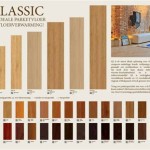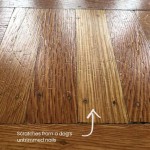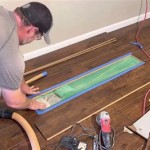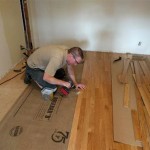Laminate Flooring: A Stylish and Practical Option for Kitchens
Laminate flooring has emerged as a popular choice for kitchen floors, offering a blend of durability, aesthetics, and affordability. Its realistic wood-look designs, water-resistant properties, and ease of maintenance make it a compelling alternative to traditional hardwood or tile flooring. This article explores the advantages, disadvantages, and key considerations when choosing laminate flooring for your kitchen.
Durability and Water Resistance
Laminate flooring is known for its durability and resistance to scratches, dents, and stains. The core of a laminate plank is made from a high-density fiberboard (HDF) core, which provides structural strength and stability. A wear layer on the top surface is made from a durable, transparent melamine resin that protects the decorative layer underneath. This layer simulates the look and feel of natural wood, stone, or tile, while being highly resistant to wear and tear.
Furthermore, laminate flooring can withstand spills and splashes effectively. Most manufacturers offer water-resistant or even waterproof options, making them suitable for areas prone to moisture, such as kitchens. The core material is generally moisture-resistant, while the wear layer acts as an additional barrier. However, it is crucial to note that laminate flooring is not impervious to water damage. Excessive exposure to standing water or prolonged flooding can still damage the flooring and require replacement.
Aesthetics and Versatility
Laminate flooring offers a wide range of designs and patterns, mimicking the appearance of various natural materials. From classic wood grains to modern concrete styles, homeowners can find a laminate option that complements their kitchen decor. The realistic textures and colors create a sophisticated and inviting atmosphere. Furthermore, laminate flooring is available in various widths and lengths, allowing for creative installation patterns, such as herringbone or chevron layout.
The versatility of laminate flooring extends beyond aesthetics. It can be installed over existing subfloors, such as concrete or plywood, simplifying the renovation process. Its interlocking system makes installation relatively easy, even for DIY enthusiasts. However, it is crucial to note that careful preparation of the subfloor is essential for a successful installation. This involves leveling the subfloor and ensuring it is free of moisture and other imperfections.
Affordability and Maintenance
Laminate flooring is generally more affordable than hardwood or tile flooring, making it an attractive option for budget-conscious homeowners. This affordability is attributed to its manufacturing process and the use of less expensive materials compared to natural wood. However, the price range can vary depending on the quality, thickness, and design of the chosen laminate flooring. Higher-end laminate options may come with features like thicker wear layers, more realistic textures, and advanced water resistance.
Maintenance is another key advantage of laminate flooring. Its surface is easy to clean and requires minimal upkeep. Sweeping or vacuuming regularly removes dust and debris, while spills can be wiped up quickly with a damp cloth. The wear layer provides protection against staining, making it ideal for high-traffic areas. However, it is important to avoid harsh chemicals and abrasive cleaners that can damage the surface. Following the manufacturer's cleaning recommendations ensures the longevity and aesthetic appeal of the flooring.

Kitchen Laminate Flooring 2024 Guide Floorvenue

Laminate Flooring Ct Wood Dalene Carpet Onedalene

Laminate Flooring In The Kitchen

6 Ideas For Waterproof Kitchen Flooring Lx Hausys

Laminte Kitchen Floor Ideas

Laminate Flooring Godfrey Hirst Residential Hard

Is There A Special Way To Install Laminate Flooring In The Kitchen

Best Flooring For Your Kitchen Godfrey Hirst Residential

All You Need To Know About Laminate Kitchen Floors Wren Kitchens
Laminate Mannington
Related Posts








